Impact Factor : 0.548
- NLM ID: 101723284
- OCoLC: 999826537
- LCCN: 2017202541
*Abraham Tamir
Received: June 03, 2017 Published: June 08, 2017
Corresponding author: Abraham Tamir, Emeritus Professor of Ben Gurion University of the Negev, Beer Sheva, Israel
DOI: 10.26717/BJSTR.2017.01.000120
The major objective of this article is to demonstrate artistically the concept of energy in its different forms. Energy is defined as “the capacity of a physical system to perform work” such as to move an object of a given mass by the application of force. The word energy derives from the Greek word energeia and appearedfor the first time in the work of Aristotle in the 4th century BC where Gottfried Leibniz (1646-1716), German philosopher and mathematician, defined it as the product of the mass of an object and its velocity squared, namely mv2. It was Gaspard-Gustave Coriolis (1792- 1843), French mathematician, mechanical engineer and scientist, who described “kinetic energy” in 1829 in its modern form, 0.5mv2, where in 1853 the Scottish engineer and physicist William Rankine (1820-1872) coined the term “potential energy.” In the following, definitions taken from the Internet of the different kinds of energy are detailed. It should be noted that in some cases there are more than one definition for a certain kind of energy and the one selected was that which best fitted its artwork.
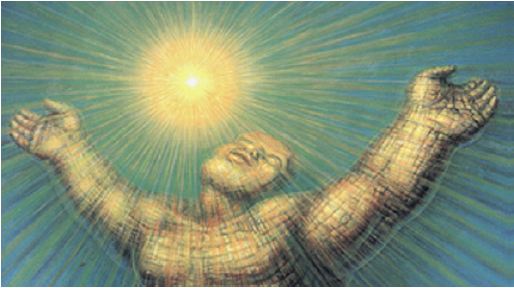
Figure 1: Free energy.
We begin with “free energy” defined as “the amount of energy available for the system to do useful work”. (Figure 1), painted by the Austrian artist De Es Schwertberger (1942), shows the sun as an infinite source of available energy where the major problem is its transformation to work. “Electrical energy” defined as “the energy made available by the flow of electric charge through a conductor” is demonstrated surrealistically in Figure 2. The artwork was painted by the famous Italian Michelangelo (1475-1564) and was slightly modified by the authors to enhance the effect of electrical energy. “Magnetic energy” demonstrated in Figure 3 by two artworks is defined as “the energy required to set up a magnetic field”. The Norwegian artist Mrs. Sigrid Tune painted the artwork on the right entitled “Magnetic Energy” where the two coloured circles demonstrate artistically the two edges of a magnet. Figure 3 left is by an unknown artist. Figure 4 demonstrates “body energy” defined as “the amount of energy required during exercise by the body”.
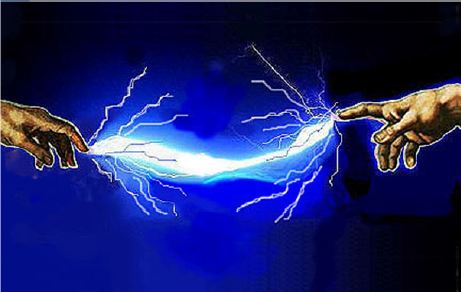
Figure 2: Electrical energy.
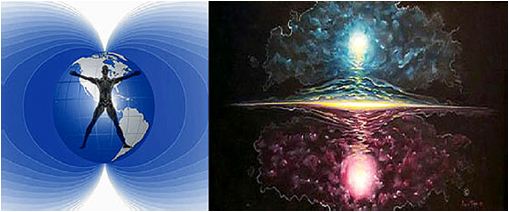
Figure 3: Magnetic energy.
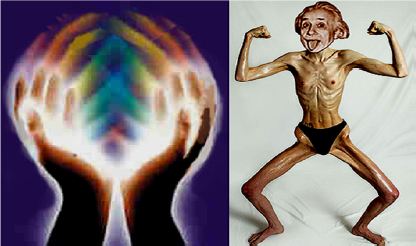
Figure 4: Body energy.
It is demonstrated on the right of the figure on which the image of Einstein was installed on the original image. Concerning “body energy” it is well known that body consumes food as a source of energy, and then burns it up to produce some useful work and quite a lot of heat. Also, it produces heat just for the purposes of maintaining a constant body temperature. Both of these sources of heat cause your body to radiate thermal energy, which can be detected with infrared sensors. The thermal energy is demonstrates on the left of Figure 4 by an unknown artist. “Heat energy” defined as “a form of energy that is transferred by a difference in temperature T2-T1” is demonstrated by two surrealistic artworks of Rene Magritte (1898-1967), Belgium. Figure 5, again by Magritte, demonstrates “potential energy” that is “energy stored in an object due to its position” where Figure 6 by the Polish surrealist Jacek Yerk (1952) demonstrates “kinetic energy”, “the energy of an object due to its motion”. Figure 7 painted by Anatoli Fomenko (1945), an Ukraine scientist, demonstrates “chemical energy” which is “the energy released during a chemical reaction” where “nuclear energy” which is “the heat produced by nuclear fission” is demonstrated in Figure 8.
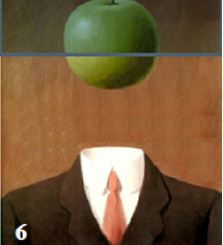
Figure 5: Potential energy.

Figure 6: Kinetic energy.
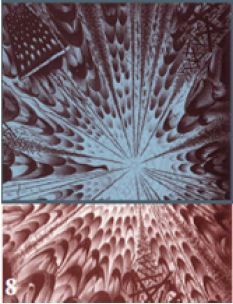
Figure 7: Chemical energy.
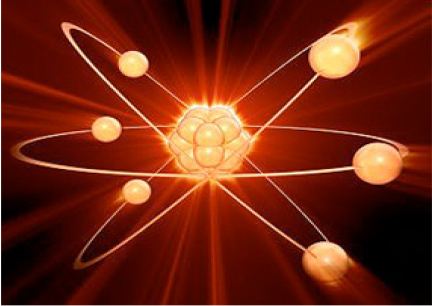
Figure 8: Nuclear energy.
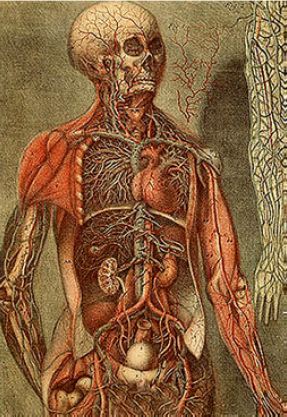
Figure 9: Internal energy.
A very impressive demonstration is that of “sound energy” painted by the American illustrator Rafael Olbinski. It is defined as “the energy you can hear that travels in vibrating waves through the air”. “Internal energy” defined as “the energy stored in a system at the molecular level due to motions and relative positions of the molecules in the system”. It is demonstrated in Figure 9 where it is well known that the interior of human body is the store of his energy. And finally “surface energy” that is “the energy required stretching a unit change of a surface area”. The bubble in Figure 10 photographed by Karl E. Deckat, a German photographer, demonstrates it. In conclusion the authors believe that the presentation of the different kind of energy by artworks makes them more understandable and perceptible (Figures 11 &12).
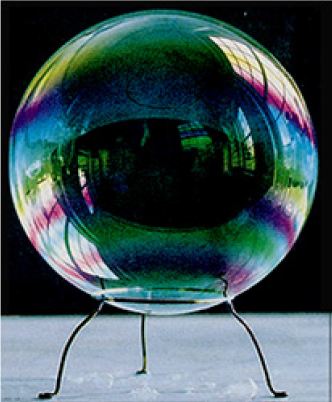
Figure 10: Surface energy.
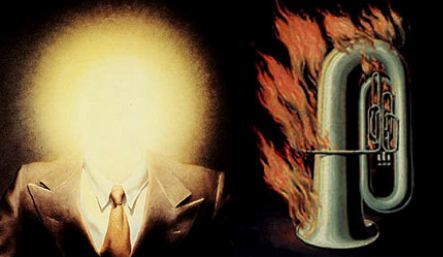
Figure 11: Heat energy.

Figure 12: Sound energy.


